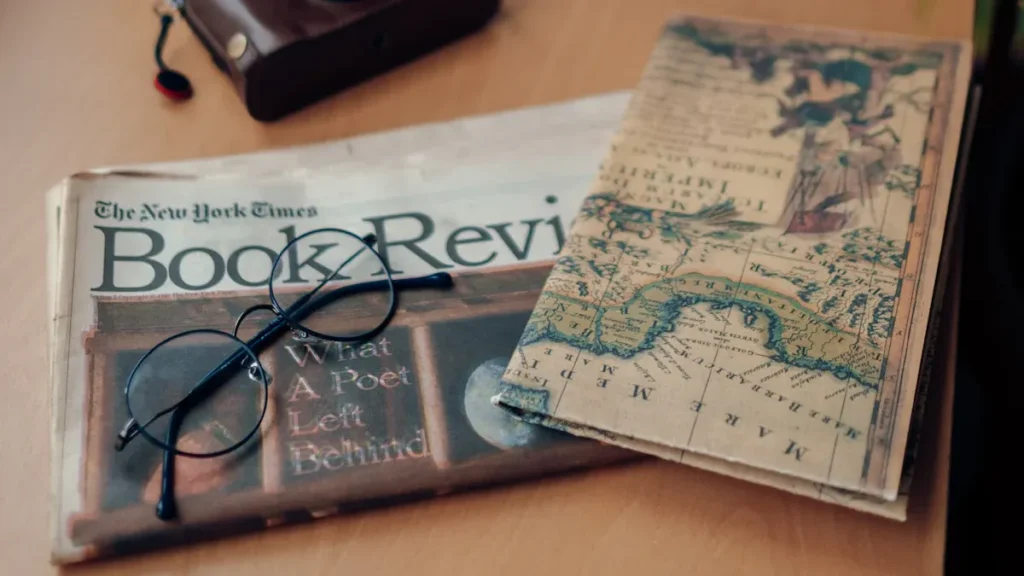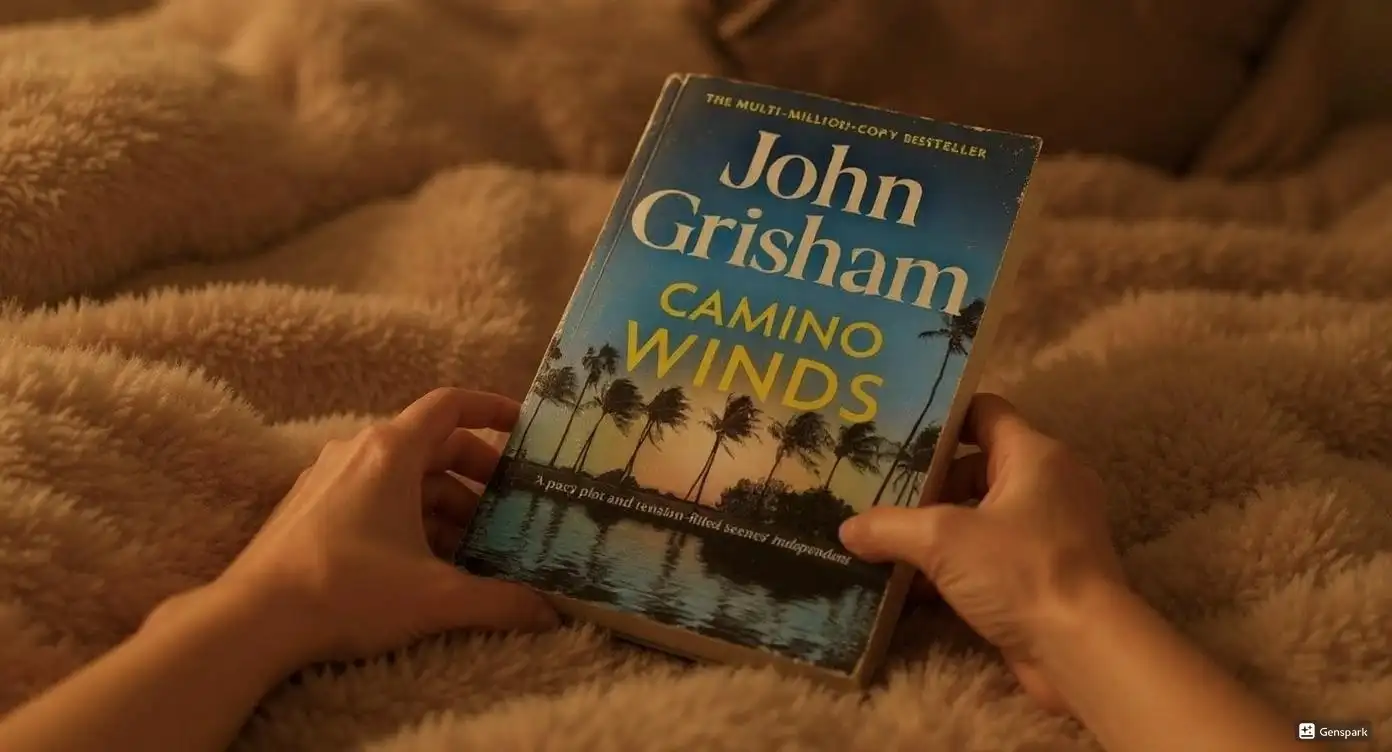I’ll be honest—after reading over 3,000 books, I don’t shock easily. But We Were Liars by E. Lockhart Book review? That one had me up past midnight, heart pounding, eyes wide, waiting for the next twist. People rave about its jaw-dropping ending, and I have to give props: the suspense and family drama live up to the hype.
Wrapped up in books calls it a “modern, sophisticated suspense novel.” Some say the plot twist saves the book. Others think it’s not earth-shattering. For me, the emotional punch hit hard. If you’re an older teen (or a grown-up who loves coming-of-age stories with secrets), you’ll want to know—does it deserve the buzz? Let’s find out together.
Key Takeaways
We Were Liars is a tense and emotional story about family secrets and pain.
The book has a strong narrator who is not always honest.
Her broken memory makes readers keep guessing. The Sinclair family looks perfect but has big problems and tricky relationships.
The private island makes the story more mysterious and tense. E. Lockhart’s writing is simple but strong.
She uses short chapters and poetic words. The plot twist is shocking and changes how you see the story.
Themes like loyalty, memory, privilege, and growing up make the story deep. This book is best for older teens and adults who like thoughtful, emotional books.
Review Overview
Immediate Verdict
I’ll be real with you—I finished We Were Liars by E. Lockhart Book review in one sitting, curled up on my couch with a mug of tea that went cold because I forgot to drink it. The book hooked me with its mysterious vibe and kept me guessing. The suspense? Chilling. The family drama? Messy in the best way. I felt the emotional punch, especially near the end. My heart actually hurt for Cadence and her friends.
But here’s the thing: not everyone agrees. I’ve seen heated debates on forums like OnlineBookClub.org. Some readers rave about the twist and the raw emotion. Others pick apart the plot, pointing out things that don’t add up—like why Cadence doesn’t just Google her own story or why the adults act so strangely. I get it.
The story has holes you could drive a yacht through. I still think the writing style and the atmosphere make up for a lot, but I can’t ignore the flaws.
Note: The book’s reputation for dividing readers is real. Some love the poetic writing and emotional gut-punch. Others get frustrated by the logic gaps. I fall somewhere in the middle—I loved the ride, even if the road was a little bumpy.
Who Should Read It
If you love stories that mess with your head and tug at your heart, this one’s for you. I’d say it’s best for older teens and adults. The book dives into mature themes—grief, trauma, family secrets. It doesn’t shy away from tough emotions. If you’re looking for a light, happy read, you might want to skip this one. But if you crave a book that makes you feel something, even if it’s uncomfortable, give it a shot.
Here’s who I think will get the most out of it:
Readers who enjoy unreliable narrators and psychological twists
Fans of coming-of-age stories with a dark edge
Anyone who likes dissecting family drama and secrets
People who don’t mind a few plot holes if the emotional payoff is strong
I wouldn’t hand this to a middle schooler. The themes hit hard, and the writing style can be tricky. But for high schoolers and adults who want a book that sparks conversation (and maybe a little debate), We Were Liars by E. Lockhart Book review delivers.
We Were Liars by E. Lockhart Book review
Book Premise
I have to admit, I love books with secrets. We Were Liars by E. Lockhart Book review gave me that. The story is about the Sinclair family. They look perfect and rich. They spend summers on their own island. But things are not as perfect as they seem. Cadence Sinclair is the main character. She is a teen who wants to know what happened one summer. There is sadness, guilt, and a mystery that kept me awake.
Here’s what made me want to keep reading:
The Sinclair family’s island is where all the secrets and drama happen.
Cadence and her cousins, called “the Liars,” are close but also fragile.
The story mixes memories, sadness, and loyalty in a spooky way.
There is a body, a secret, and lots of feelings.
I noticed the difference between what the characters show and what they hide. The book shows how far people go to protect family and themselves. It is a coming-of-age story with a dark twist.
Main Characters
Cadence Sinclair
Cadence, or Cady, is the main person in the story. She is smart and feels things deeply. She is hurt by something she cannot remember. Her voice feels honest and real. She is confused, mad, and wants answers. E. Lockhart shows what it is like for a teen with trauma. I could feel Cady’s pain and her wish to fit in. She pushes people away but still wants to belong. She is not always easy to like, but she feels real.
The Liars
The Liars are Cadence, Johnny, Mirren, and Gat. Each one is different. Johnny is fun and takes risks. Mirren is dreamy and loyal. Gat is not part of the family but makes them think. Their friendship is strong but also hard. They have inside jokes and rules they do not say out loud. Their bond gives them strength but also causes pain.
The Sinclair Family
The rest of the Sinclair family is interesting too. They care a lot about how they look. But inside, they are falling apart. The adults fight over money and old problems. The kids try to be themselves but carry family secrets. Lockhart shows the difference between their perfect image and their real problems. I saw people in denial, scared, and sad. This made them feel real, even when I did not agree with them.
Setting
The private island feels like a character in the story. Every summer, Cadence and her cousins go to Beechwood Island. It is off the coast of Massachusetts. There are many houses, one for each family. This makes the families compete. The main house belongs to Cadence’s grandfather. It shows the family’s power and pride. As the story goes on, the island feels creepy. The beaches and houses hide secrets. Being alone on the island makes things more intense.
Cadence stays at Cuddledown, the Liars’ house. It gets messier as the story goes on, just like her mind.
Gat comes to the island and does not fit in. He makes people think about privilege.
The island looks peaceful but hides pain and tragedy.
I could almost feel the cold ocean air and the heavy secrets. The setting makes the suspense and family drama even stronger. It is a place that looks nice in pictures but feels haunted when you know the truth.
Plot Summary
Central Mystery
I have read a lot of books with secrets, but We Were Liars kept me guessing in a way that felt fresh. The whole story centers on Cadence, a girl who cannot remember what happened during one summer on her family’s private island. She knows something bad happened. She feels pain and confusion.
Her family avoids talking about it. Every page made me want to know the truth. I found myself flipping back and forth, looking for clues I might have missed.
The mystery is not just about what happened to Cadence. It is about why her memory is broken and what the Sinclair family hides. The book ties this mystery to big ideas like privilege, family loyalty, and the cost of keeping secrets. Cadence’s memory loss makes her an unreliable narrator. I never knew if I could trust what she said. This kept the suspense high.
I felt like a detective, piecing together the story from fragments. The tension builds with every chapter. Family arguments, inheritance fights, and a tragic accident all add to the suspense. I could feel the pressure mounting, just like the essay on Bartleby describes—there is always something bubbling under the surface.

Emotional Tone
This book hit me right in the feelings. I did not expect to get so attached to Cadence and her friends. The emotional tone is heavy, but it feels real. I felt Cadence’s sadness, her anger, and her longing for answers. The story made me think about how people hide pain and pretend everything is fine. I saw myself in Cadence’s confusion and her need to understand her past.
The Guardian review says readers feel hooked and even confused, just like Cadence. I agree. The book made me question what I thought I knew. It taught me empathy. I started to look past the perfect surface of the Sinclair family and see the pain underneath.
Structure
The way E. Lockhart tells the story is clever. The structure matches Cadence’s broken memory. The book jumps between summers, mixing past and present. Sometimes the writing feels like poetry. Other times, it is sharp and direct. This style made me feel Cadence’s confusion and pain.
The story uses short chapters and fragments. This keeps the pace quick and the suspense high.
Fairytales pop up in the story. They add layers and make me think about what is real and what is not.
The book hides and reveals information at just the right moments. I never felt lost, but I always wanted more.
I noticed that the structure mirrors Cadence’s trauma. The timeline is not straight. The story starts before the accident, then moves back and forth. This made me feel like I was inside Cadence’s mind. The sensory details and the way characters are described help me remember things with her. The structure supports the mystery and the emotional depth. It is one of the reasons I could not put the book down.
In my 20 years of reviewing books, I have seen many stories try to be mysterious. Few pull it off as well as We Were Liars. The suspense, the emotional punch, and the clever structure make it stand out.
Narrative Style
Writing Approach
I have to give props to E. Lockhart’s writing style. It’s not your typical YA novel. The sentences feel sharp, sometimes even poetic. I remember reading late at night, the words almost echoing in my head. The chapters are short. The language is simple, but the feelings run deep. I could sense the tension in every line.
The story doesn’t waste time with long descriptions. Instead, it drops you right into Cadence’s world. I felt like I was living on that island, breathing in the salty air, and carrying the weight of her secrets.
I’ve read reviews that compare this style to other popular books. For example:
“We Were Liars” stands out for its surprising narrative and easy reading style. Even readers who don’t usually finish books get hooked.
Other books like “Jackaby” and “One Of Us Is Lying” use multiple perspectives and twists, but Lockhart’s approach feels more personal and raw.
Some critics say the writing is almost too simple, but I think that’s what makes the emotions hit harder.
Unreliable Narration
I love a good unreliable narrator. Cadence is one of the best I’ve seen. She tells her story, but she leaves out pieces—sometimes on purpose, sometimes because she just can’t remember. I found myself questioning everything she said. Did that really happen? Or is it just how she remembers it? This kept me on my toes. I felt like a detective, searching for clues in every chapter.
The unreliable narration adds to the suspense. I never knew what was real. The book plays with memory and truth in a way that feels honest. I’ve seen other books try this, but few pull it off as well. The confusion isn’t just a trick—it’s part of Cadence’s pain. I felt her struggle, and it made the ending even more powerful.
Pacing
The pacing in “We Were Liars” is one of its biggest strengths. The chapters fly by. I finished the book in a single night—my tea went cold, and I barely noticed the time. The short chapters and quick scenes make it easy to keep reading. I never felt bored. The story moves fast, but it still gives you time to feel the emotions.
Tip: If you want a book that grabs you and doesn’t let go, this is it. The pacing makes it perfect for readers who get distracted easily or want a story that keeps them guessing.
From my experience, books with this kind of pacing are rare. Most try to drag things out, but “We Were Liars” knows when to speed up and when to slow down. It’s a wild ride, and I loved every minute of it.
Literary Devices
We Were Liars had me doing that more than once. I remember sitting on my porch, book in hand, and thinking, “Wow, did she really just compare heartbreak to the universe collapsing?” My tea went cold again. Worth it.
E. Lockhart doesn’t just tell a story—she paints with words. The metaphors in this book hit hard. I felt them in my chest. The way she describes Cadence’s pain isn’t just about headaches or sadness. It’s the universe shrinking, the world tilting, the air getting heavy. I read a literary critique that pointed out how Lockhart’s figurative language pulls you in emotionally.
The words aren’t just there to move the plot. They’re art. Every time the universe gets mentioned, it’s not about stars or planets. It’s about life falling apart, about feeling small and lost. That’s the kind of writing that sticks with me.
Symbolism runs deep in this story. The Sinclair family’s house isn’t just a fancy building. It’s a symbol for everything the family wants to show the world—wealth, power, perfection. But inside, it’s full of expensive things that don’t mean much. I saw the house as a metaphor for Cadence’s struggle with her family’s legacy.
She wants to belong, but she also wants to break free. One critique I read explained how these details highlight the family’s obsession with material things and their emotional distance from each other. I couldn’t agree more. Every time Lockhart described the house, I felt the weight of all those secrets hiding behind perfect walls.
Here’s what stood out to me most:
Metaphors: Pain as physical destruction, love as something dangerous, memories as broken glass.
Repetition: Certain phrases and images come back again and again, making the story feel like a haunting song.
Fairy Tale Elements: Lockhart slips in fairy tales and myths, twisting them to fit the Sinclair family’s story. I loved these moments—they made the book feel magical and dark at the same time.
If you’re the kind of reader who loves finding hidden meanings and clever turns of phrase, you’ll have a field day with this book. I found myself underlining lines, jotting notes in the margins, and even texting friends quotes that gave me chills.
To be fair, not everyone will love this style. Some readers might find it a bit much, maybe even distracting. But for me, the literary devices made the story richer and more memorable.
Character Dynamics
Cadence’s Journey
I have to admit, Cadence’s journey pulled me in more than I expected. I started reading on a rainy Saturday, thinking I’d just get through a few chapters. Instead, I found myself glued to the couch, heart pounding, as Cadence tried to piece together her broken summer memories.
Her motto, “always do what you are afraid to do,” stuck with me. I scribbled it on a sticky note and slapped it on my fridge. That line shows how much she wants to face her fears, even when her mind feels like a puzzle with missing pieces.
Cadence’s growth feels real. She starts out lost, weighed down by pain and confusion. As the story moves forward, I saw her shift from just focusing on her trauma to searching for meaning and even a bit of hope.
The fairytale she tells in Chapter 40 changes, too. It goes from pure tragedy to something with a hint of heroism and escape. That moment made me pause and reread, just to soak it in.
Here are a few things that stood out to me about Cadence’s journey:
Her view of her grandfather’s ivory statues changes after talking with Gat. She starts to see the world in a new way.
She wants independence, but her pain and memory loss hold her back.
The Liars seem carefree, but Cadence’s struggle sets her apart.
She begins to notice things outside her own pain, like Gat’s life and her family’s problems.
I have to give props to E. Lockhart for making Cadence’s transformation feel honest. I felt her frustration, her longing, and her slow steps toward acceptance.
The Liars’ Relationships
The Liars—Cadence, Johnny, Mirren, and Gat—reminded me of those summer friends you never forget. Their bond feels strong, but it’s also messy. I loved how they had their own inside jokes and secret rules.
Sometimes, I wanted to jump into the story and join them on the beach. Other times, I wanted to shake them and say, “Talk to each other, please!”
Gat stands out. He’s not a Sinclair, and he makes everyone question things. His presence shakes up the group. Cadence’s feelings for him add another layer of tension. Mirren and Johnny bring their own quirks and loyalty, but I could sense the cracks in their friendship. The Liars support each other, but they also hide things. That mix of love and secrets made their dynamic feel real.
Family Conflicts
Now, the Sinclair family—wow. Talk about drama. On the surface, they look perfect. Underneath, they’re a mess. The adults fight over money and who gets what house. The kids try to stay out of it, but the tension seeps into everything. I could feel the pressure every time Cadence’s mom told her to “act normal.”
The family’s obsession with appearances made me cringe. I’ve seen families like this in real life—always smiling for the camera, never talking about what really matters. The Sinclairs avoid hard conversations. They sweep problems under the rug, hoping they’ll disappear. But secrets have a way of coming out, and in this book, they explode.
From my experience reviewing family dramas, this one stands out because the conflicts feel both big and small. It’s not just about money. It’s about love, loyalty, and the lies we tell to protect ourselves. I finished the book thinking about my own family and the things we never say out loud. That’s the mark of a story that hits home.
Themes
Family and Loyalty
I have to admit, family drama always pulls me in. I read “We Were Liars” curled up on my couch, and the Sinclair family’s secrets kept me glued to the page. The book dives deep into what it means to be loyal to your family—even when it hurts.
I saw love, betrayal, and loyalty tangled together like a knot you can’t untie. The Sinclairs look perfect from the outside. They have money, big houses, and their own island. Underneath, they carry heavy expectations and a long history of secrets.
I noticed how the family’s code—keep a “stiff upper lip,” never show weakness—shapes everything. The adults expect the kids to hide their pain and pretend nothing is wrong. I felt the pressure right along with Cadence. She wants to be there for her cousins, but the family rules make it hard to talk about real feelings. The story shows how far people will go to protect each other, even if it means hiding the truth.
The Sinclair family’s love comes with strings attached.
Secrets and loyalty go hand in hand, sometimes leading to heartbreak.
The sisters in the story face tough choices, forced to cover up painful events for the sake of family.
The family’s need to look perfect causes more pain than anyone wants to admit.
“I was there for my sisters, but we dealt with our feelings about Rosemary alone. Here in the Sinclair family, we keep a stiff upper lip. We make the best of things. We look to the future. These are Harris’s mottoes, and they are Tipper’s, as well.”
Memory and Truth
If you’ve ever forgotten something important, you’ll get why Cadence’s story hit me so hard. The book plays with memory in a way that left me questioning everything. Cadence can’t remember what happened one summer. She tries to piece together the truth, but her mind keeps slipping. I felt her frustration every time she hit a wall.
The story shows how memory and truth don’t always match up. When people lie or hide things, it gets even harder to remember what’s real. I learned that lying takes a lot of brainpower.
People have to push away the truth, make up new stories, and keep track of what they’ve said. This makes it easy to forget details or even start doubting your own memories. That’s exactly what happens to Cadence. Her struggle to remember feels real because it matches what scientists say about memory and deception.
Lying and keeping secrets can make you forget what really happened.
Sometimes, people start to doubt their own memories after hiding the truth.
The book’s twisty plot matches how memory works in real life—messy and confusing.
I have to give props to E. Lockhart for making me feel lost right along with Cadence. The line between truth and lies gets blurry, and I found myself second-guessing everything. That’s a rare feeling, even after years of reading mysteries.
Coming of Age
Coming-of-age stories always get me. I remember reading this book late at night, thinking about how hard it is to grow up. Cadence and her friends face big changes. They deal with love, heartbreak, and the weight of family secrets. I saw them try to figure out who they are, even when the adults around them act like everything is fine.
Cadence’s journey feels honest. She wants answers. She wants to belong. She makes mistakes and learns from them. I saw her struggle with guilt, grief, and hope. The story doesn’t sugarcoat growing up. It shows the pain and confusion, but also the moments of courage. I finished the book feeling like I’d grown up a little, too—at least as much as a bookworm can.
Class and Privilege
I have to confess, I’m a sucker for stories about rich families with secrets. Maybe it’s because I grew up in a house where the fanciest thing we owned was a microwave that sometimes worked. So, when I picked up We Were Liars, I knew I was in for a treat. The Sinclair family has their own private island. Private. Island. I read that and thought, “Wow, I get excited when I find two-for-one bagels.” The book had me hooked from the start.
E. Lockhart doesn’t do that. She shows the Sinclairs as real people—flawed, proud, and sometimes clueless about how lucky they are. I could almost smell the salty air and see the big houses lined up like trophies. The family’s wealth isn’t just background noise. It shapes everything they do.
Here’s what stood out to me about class and privilege in this book:
The Sinclairs act like rules don’t apply to them. They hide problems behind money and smiles.
Gat, who isn’t part of the family, feels out of place. He asks hard questions about fairness and belonging.
The adults fight over houses and inheritance, while the kids try to find their own worth.
I remember reading late at night, curled up in my old armchair, and thinking about how money can make people blind. The Sinclairs want to look perfect. They don’t talk about real problems. They push away anyone who doesn’t fit their image. I saw this most with Gat. He’s smart, thoughtful, and not rich. He challenges Cadence to see the world differently. Their friendship made me think about my own life and the times I felt like an outsider.
“He was contemplation and enthusiasm. Ambition and strong coffee. I could have looked at him forever.”
—Cadence on Gat
That line hit me. Gat stands out because he doesn’t have the same privilege. He makes Cadence question what she’s always believed. I have to give props to Lockhart for making me care about these questions. The book doesn’t just show fancy houses. It asks what it means to belong, and who gets to decide.
To be fair, not everyone will relate to the Sinclairs’ world. I sure didn’t. But I still felt the sting of wanting to fit in, of feeling left out. The story made me think about how class shapes friendships, love, and even the lies we tell. After 20 years of reviewing books, I can say this one nails the theme of privilege without preaching. It left me thinking long after I closed the cover… and yes, I still want that private island. But I’ll settle for my bagels.
Plot Twist
Build-Up
I have to admit, I’m a sucker for a good twist. After reading over 3,000 books, I rarely get caught off guard. But We Were Liars had me second-guessing myself the whole way through. I remember reading late at night, curled up in my favorite chair, thinking I had everything figured out. Little did I know, E. Lockhart was dropping clues right under my nose.
The suspense built slowly, like a storm rolling in over the ocean. Every chapter felt like a puzzle piece, but none of them seemed to fit until the very end.
The author uses a clever trick I’ve seen in only a handful of books—the “Dead the whole time” technique. This means the story hides a huge truth in plain sight, giving readers just enough hints to keep them guessing. I found myself flipping back, searching for details I missed.
The build-up works because it never feels forced. The story lets you get comfortable, then pulls the rug out from under you. I have to give props to Lockhart for weaving in those subtle clues. The suspense kept me turning pages, heart pounding, desperate for answers.
Impact
When the twist finally hit, I sat there in shock. My tea went cold (again). I stared at the page, trying to process what I’d just read. I felt like someone had punched me in the gut. The twist didn’t just change the story—it changed how I saw every character, every memory, every conversation. Suddenly, all those strange moments made sense. The emotional impact was huge. I actually had to close the book for a minute and just breathe.
I’ve read a lot of books that try to surprise you, but most don’t stick the landing. We Were Liars does. The twist made the whole story feel deeper and more meaningful. It turned a simple family drama into something unforgettable. I still think about it, even now. That’s rare for me. After 20 years of reviewing books, I can confidently say this twist is one of the most memorable I’ve ever read.
Reader Reactions
I love talking to other readers about this book. Some people gasp out loud. Others message me in all caps: “WHAT JUST HAPPENED?!” I’ve seen friends reread the whole thing, looking for clues they missed. The twist sparks debates—some folks feel tricked, others feel amazed. I fall somewhere in the middle. I love a story that makes me question everything, even if it leaves me a little heartbroken.
If you want a book that gets people talking, this is it. The twist doesn’t just shock you—it makes you want to share the experience. I still remember the first time I finished it. I texted three friends before I even put the book down. That’s the power of a great plot twist. It sticks with you, long after the last page.
Strengths and Weaknesses
What Works
I have to give props to E. Lockhart—We Were Liars knows how to grab a reader by the collar and not let go. I read this book in one sitting, curled up in my favorite chair, tea forgotten and cold on the table. The suspense is chilling. Every chapter feels like a puzzle piece, and I found myself racing to fit them together. The emotional impact? Huge. I actually had to pause and breathe after the twist. My heart hurt for Cadence and her friends.
Here’s what really worked for me:
Atmosphere: The private island setting feels both dreamy and haunted. I could almost smell the salty air and hear the waves crashing.
Unreliable Narration: Cadence’s broken memory kept me guessing. I love when a book makes me question everything.
Short Chapters: The quick pace made it impossible to put down. I kept telling myself, “Just one more chapter…” and suddenly it was 2 a.m.
Emotional Honesty: The book doesn’t shy away from tough feelings. Grief, guilt, love—it’s all there, raw and real.
If you want a book that makes you feel something deep, this one delivers. I finished it and immediately wanted to talk about it with someone—anyone.
Drawbacks
But here’s the thing… even a book that kept me up all night isn’t perfect. I’ve read over 3,000 books, and I’ve learned to spot the bumps in the road. Some readers, like one who gave it 4 stars, called it a page-turner but felt it lacked real depth. They wanted more meaning—something to chew on after the last page. The story moves fast, but sometimes it feels like events just happen without a bigger purpose. I get that. I finished the book and thought, “What’s the lesson here?” The answer felt a little fuzzy.
Another reader gave it 3 stars and said the story got slow and confusing at times. I have to agree. There were moments when I lost track of what was happening, especially when the timeline jumped around. The mystery kept me hooked, but a few chapters dragged. I found myself flipping back, trying to remember who said what and when.
Some parts feel a bit shallow—big on drama, light on life lessons.
The plot can get tangled, and not always in a good way.
If you want a clear moral or a deep message, you might walk away unsatisfied.
Pacing and Reread Value
The pacing in We Were Liars is wild. I flew through the book, barely stopping to refill my mug. The short chapters and cliffhangers make it easy to binge-read. I love that. But I’ll be honest—on a second read, the magic fades a bit. Once you know the twist, the suspense isn’t the same. I still enjoyed picking up on clues I missed the first time, but the emotional punch hit hardest on my first read.
Tip: This is the kind of book you want to read in one or two sittings. The tension builds best when you’re fully immersed. If you’re a rereader, you’ll find new details, but the shock value won’t hit as hard.
After 20 years of reviewing books, I can confidently say We Were Liars is a wild ride—flawed, but unforgettable. If you love books that keep you guessing and make you feel, this one is worth your time… even if your tea goes cold.
Final Thoughts
I have to give props to We Were Liars by E. Lockhart Book review for its chilling suspense, emotional punch, and unique style. This book left me gasping and replaying scenes in my head long after I finished.
If you love coming-of-age stories with secrets and don’t mind a few bumps, this one’s for you. I’d love to hear if the twist shocked you too—drop your thoughts below! Did you finish it in one sitting, or did you need a break to breathe?
Sip The Unknown—Discover Stories You Never Knew You’d Love!
Dionysus Reviews Has A Book For Every Mood
Biography & Memoir
Fiction
Mystery & Detective
Nonfiction
Philosophy
Psychology
Romance
Science Fiction & Fantasy
Teens & Young Adult
Thriller & Suspense
Frequently Asked Questions
Is “We Were Liars” really as shocking as people say?
I have to give props—this book left me staring at the ceiling, jaw dropped. I thought I’d seen every twist out there. Little did I know, this one would actually make me gasp. If you love surprises, you’ll get your money’s worth.
Can I read this if I’m not a big fan of YA books?
Absolutely! I’ve read over 3,000 books, and I still found myself hooked. The writing feels mature, and the themes hit hard. If you like family drama and suspense, you’ll enjoy it—even if you usually skip YA.
Is the writing style hard to follow?
I’ll be honest, the style threw me at first. The chapters are short, and the language is poetic. But after a few pages, I got into the rhythm. If you like books that play with words, you’ll love it. If not, it might feel odd.
Does the book deal with tough topics?
Yes, it does. Grief, trauma, and family secrets run deep here. I felt the weight of every page. The story doesn’t get graphic, but it does get emotional. I’d say it’s best for older teens and adults who want something real.
Will I want to reread it after knowing the twist?
I did! The first read had me racing for answers. On my second read, I spotted clues I missed before. The shock value fades, but the details pop. If you love picking apart mysteries, you’ll have fun going back.
Is this a good pick for a book club?
Oh, definitely. I finished it and immediately wanted to talk about it. The twist sparks debate, and everyone has a theory. If your group likes stories with secrets and big emotions, this one will get people talking.
How does “We Were Liars” compare to other twisty books?
From my experience, this one stands out. The twist packs a punch, and the emotional fallout feels real. I’ve read plenty of thrillers, but few left me as rattled as this. It’s not perfect, but it’s unforgettable.









